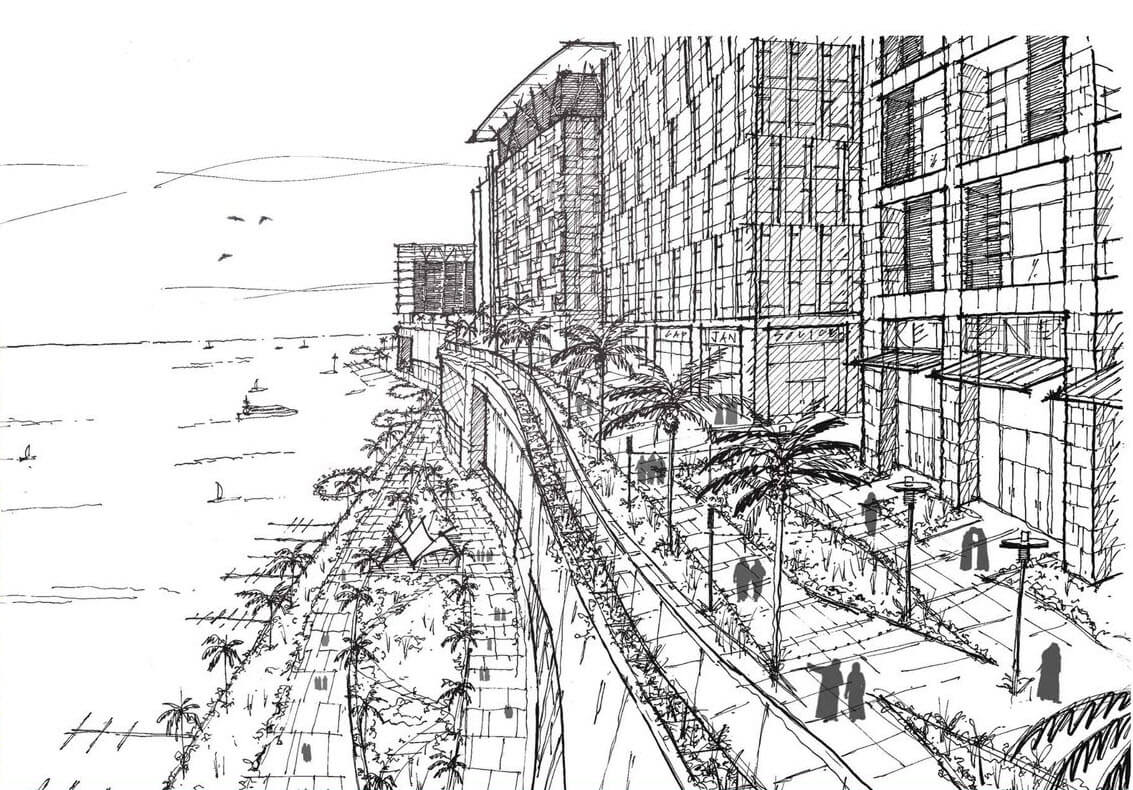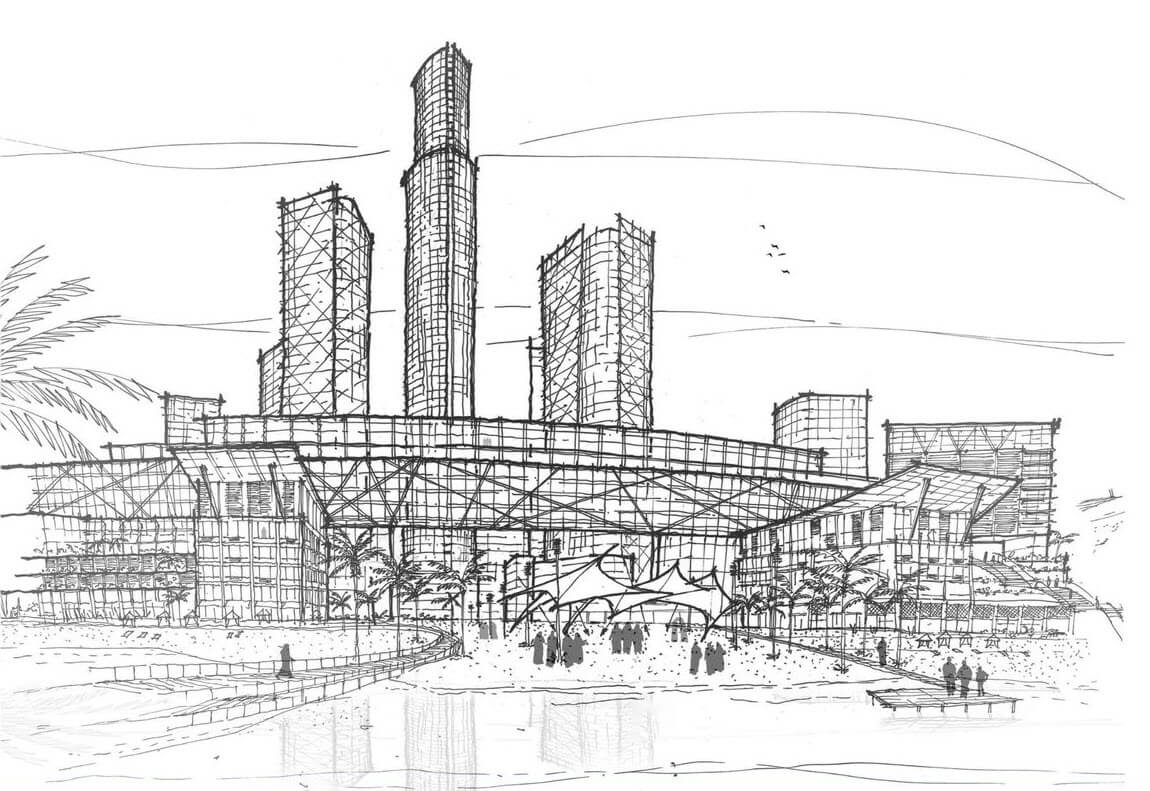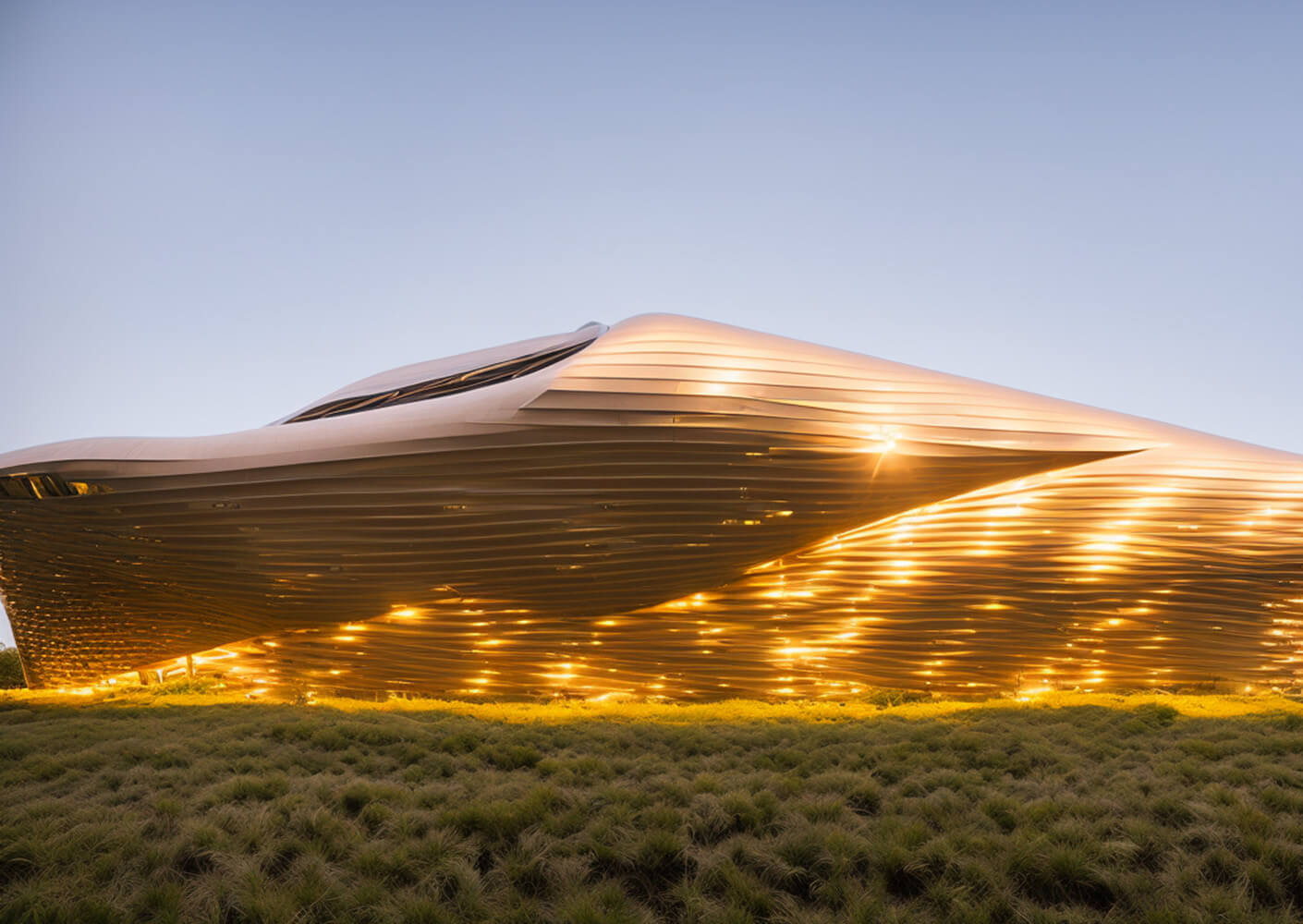Mide Akinsade: Houston on Its Own Terms
It’s been two years since Mide Akinsade packed up his life in Washington, D.C., scooped his dog Reilly into a minivan, and headed west to take on a role he had been eyeing since he entered the profession 30 years ago. He hadn’t imagined his dream would manifest in Texas, but as the first Design Director of Perkins&Will’s Houston studio, he is seizing the moment.

The timing lends extra weight to the thrill of his charge: to shape a design culture in a well-established practice. Keeping the big picture in view, Mide also appreciates that he arrived in Houston—mid pandemic—as it verges on overtaking Chicago as the third largest city in the U.S. Fresh eyes and a global perspective can be valuable when a city starts to see a lot of change, and fast.
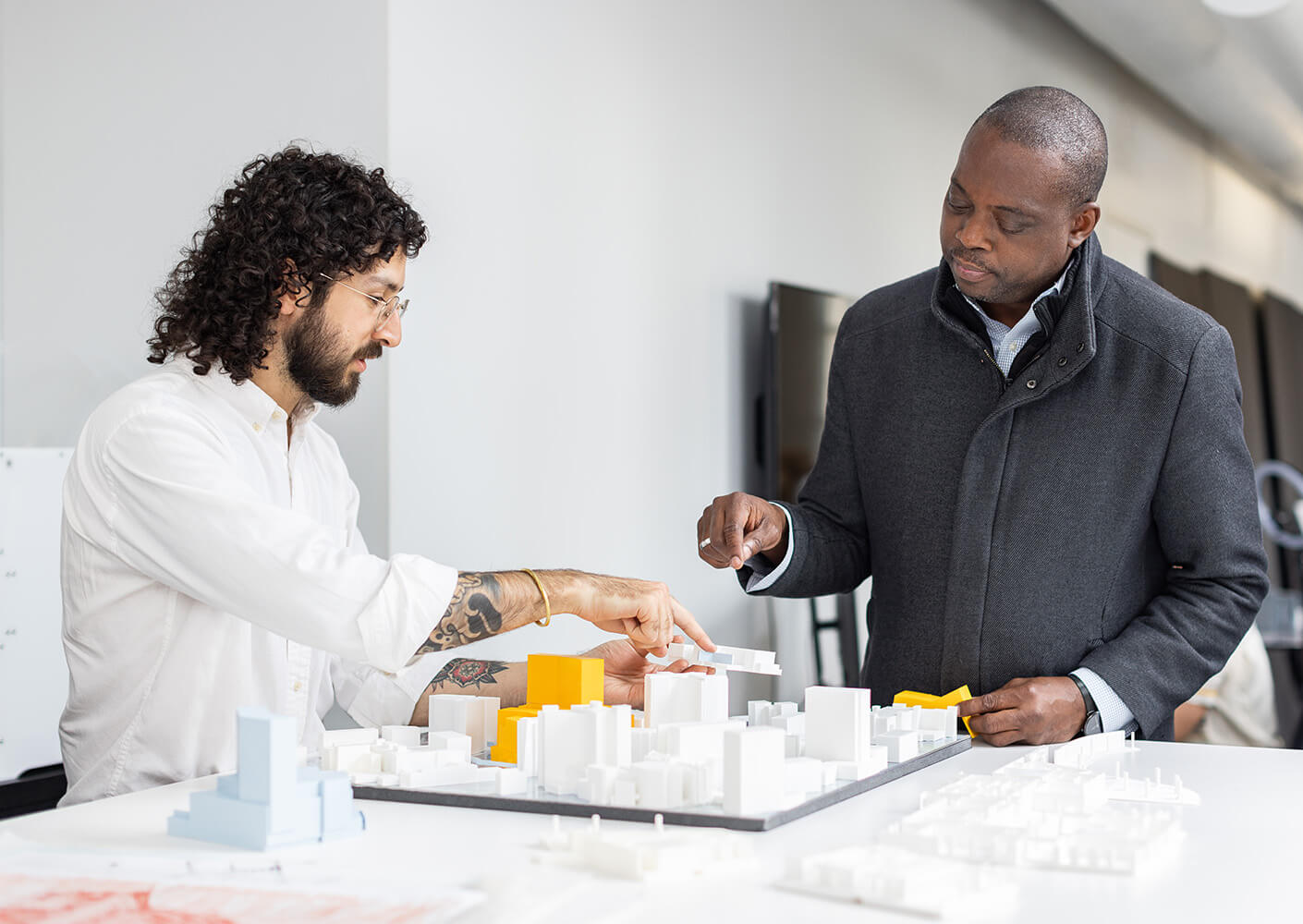
—Diana Davis, Managing Director, Houston Studio
Houstonians “want to know that you have their best interests at heart,” he says. “That you’re kinfolk, you know? They want to break bread with you.”
So, as Design Director, he is putting in the work it takes to learn his new city—its people, its histories, its ways. He is well aware that just as it takes time to make a new place feel like home, it takes time to earn your keep as a local.
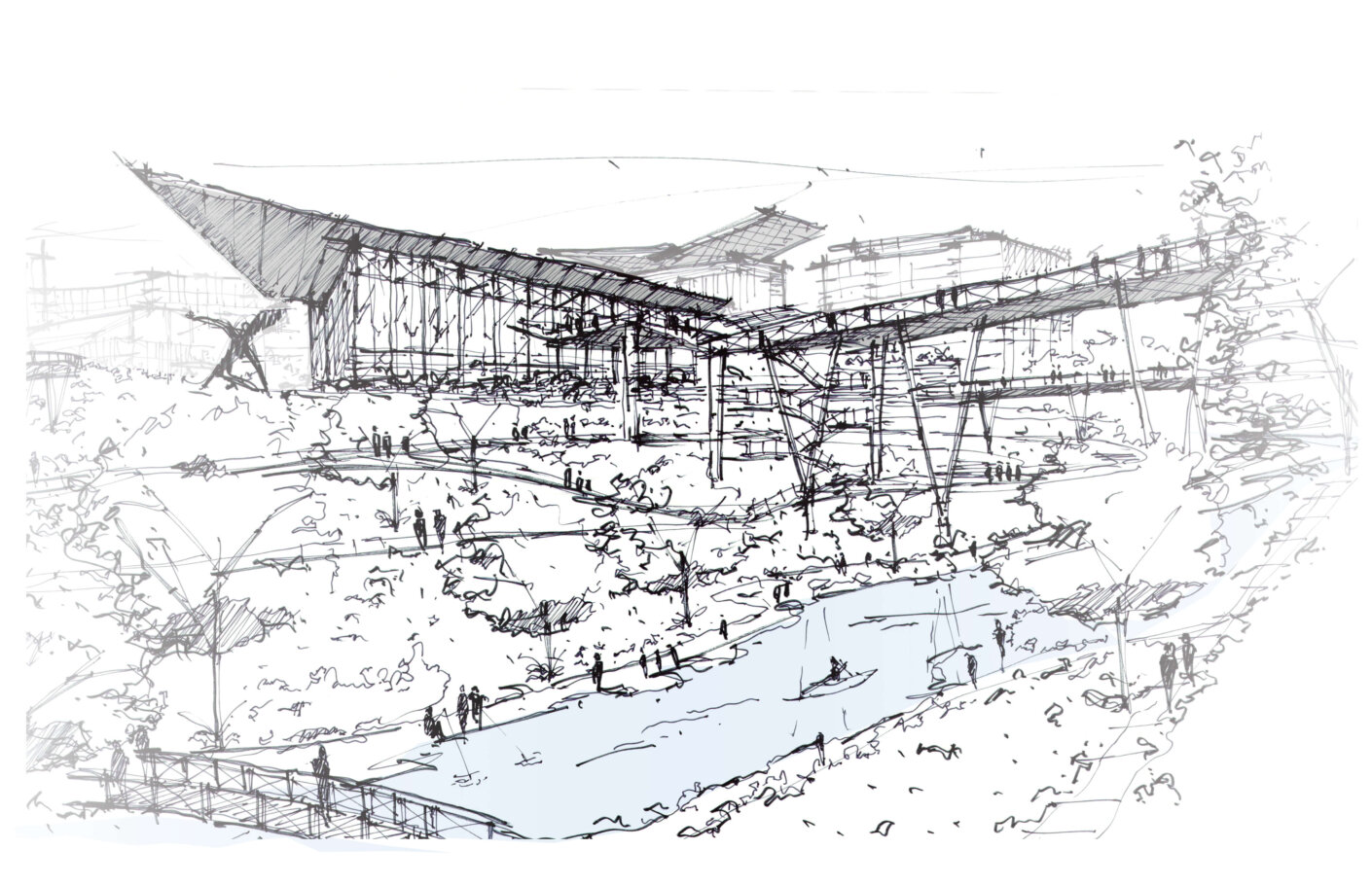
The city’s principal waterway, Buffalo Bayou is just down the way from his house in East Downtown. And on a mile-long stretch of its postindustrial waterfront is East River, one of the studio’s major masterplanning projects. It is part of a major philanthropic initiative to restore the bayou with hike-and-bike trails, housing, and resilient infrastructure.
Mide has the feeling that, in addition to the team’s expertise, what sold the client on Perkins&Will was his personal connection to the site. He may be new in town, but they could tell Mide already knows and cares about this place.
He recalls the first thing he noticed about Houston when he came to interview at the height of the pandemic: It was the middle of the day, but downtown was a ghost town.
After the interview, he was driving around looking for a coffee shop. He found one in the lobby of an office building and asked whether this was the normal vibe downtown. “It’s the pandemic” was the answer. “People are staying home.”
—Mide Akinsade

Two years later, Mide is excited to see a few apartment buildings going up and some buy-in for a diversification of uses downtown. It won’t be without its challenges. To adapt existing buildings for residential use, for example, architects will have to design ways to channel daylight into the middle of the office buildings’ very large floor plates.
But as Houston emerges from the pandemic, Mide says, “now is the opportunity to infuse the downtown character with other uses, so it can be a healthy, accessible urban place every day of the week.”
Every city has its quirks. But as Mide took in the city on his very first visit, there was something about it all he couldn’t quite put his finger on. Back in D.C., it came to him: Houston has no zoning!
On the East Coast—and just about everywhere else—zoning is the rule for land use and how things operate. An “apartment building next to a tire shop next to a church next to a tattoo parlor next to a hospital with a school right around the corner” didn’t make sense at first.
OK pivot, Mide thought: No zoning has its own logic.
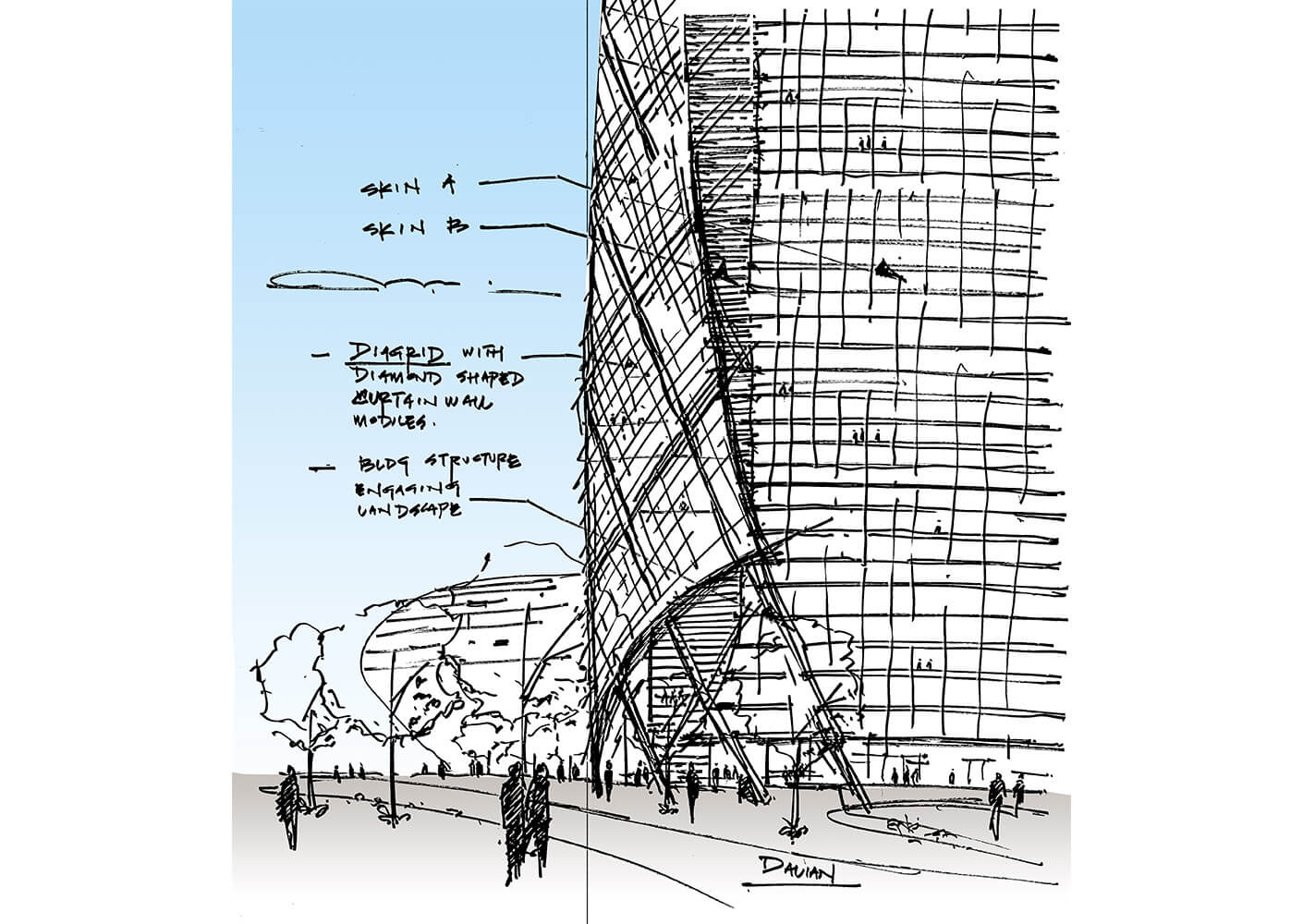

Growing up in Ondo, Nigeria, a few hours outside Lagos, he often visited his uncles and aunties in the city and, as he is doing now in Houston, came to learn its ways. “When you hear an outsider describe Lagos,” he says, “the first thing they say is, ‘It’s chaotic. It’s loud, it’s noisy. I can’t make sense of it. But ask somebody from Lagos to describe it, and they know the city like the back of their hand. They’ve learned to approach the city on its terms.”
More specifically, Mide thinks technology has a role to play in Houston’s no-holds-barred approach to its cityscape.
And as it happens, dreaming with technology is one of the ways his design mind channels his inner sci-fi geek. A self-confessed Trekkie and a newish devotee of Octavia Butler, he is inspired by science fiction’s ability to reframe the future in ways that inspire urgent change in the present.
His “Meta Tower” concept study imagines cloaking-device technology that would draw daylight down to street level in the urban canyons of Lower Manhattan.
But Mide uses the real science behind the fictions to explain why Perkins&Will’s Living Design philosophy resonates with his own. Both, he says, recognize the whole planet as a single live ecosystem, of which buildings and the “built environment” are just one part.
To evidence the science behind holistic thinking, Mide quotes astrophysicist Neil deGrasse Tyson: “We are stardust. The same compounds that make up the sun and make up all these other stars are in us, in what you find in the ocean. Therefore we are the universe. We are part of the universe.”
—Mide Akinsade
Living Design is second nature to Mide because it insists on the bigger picture—his greatest strength as a designer.
As you would expect from a good Design Director, Mide can respond to what’s immediately in front of him, as in a review or a stakeholder charette. But the worldliness of his perspective draws out meaningful connections to a project’s larger contexts.
Cosmopolitanism, science, technology: they all feed Mide’s curiosity about our planet-scale ecosystem.
On a project like the MD Anderson Cancer Center—part of the largest medical complex in the world—his approach is all the more necessary. The scale and reach of the project are hard to wrap your head around.
Arching from the local economy to global-health concerns is a calculus worthy of an astrophysicist. Then again, it’s precisely the kind of bigger-picture thinking that makes Mide right at home in Texas.
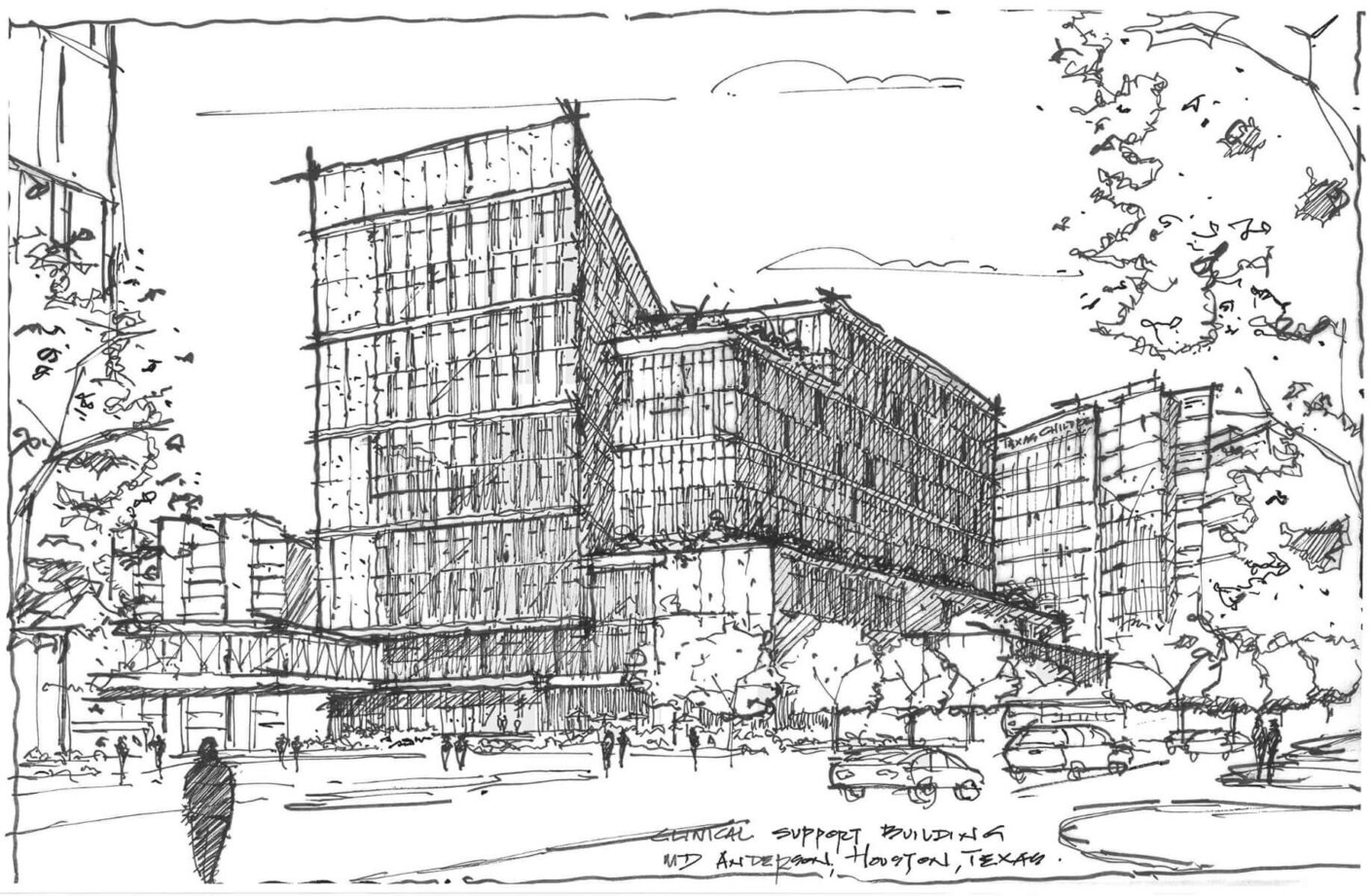
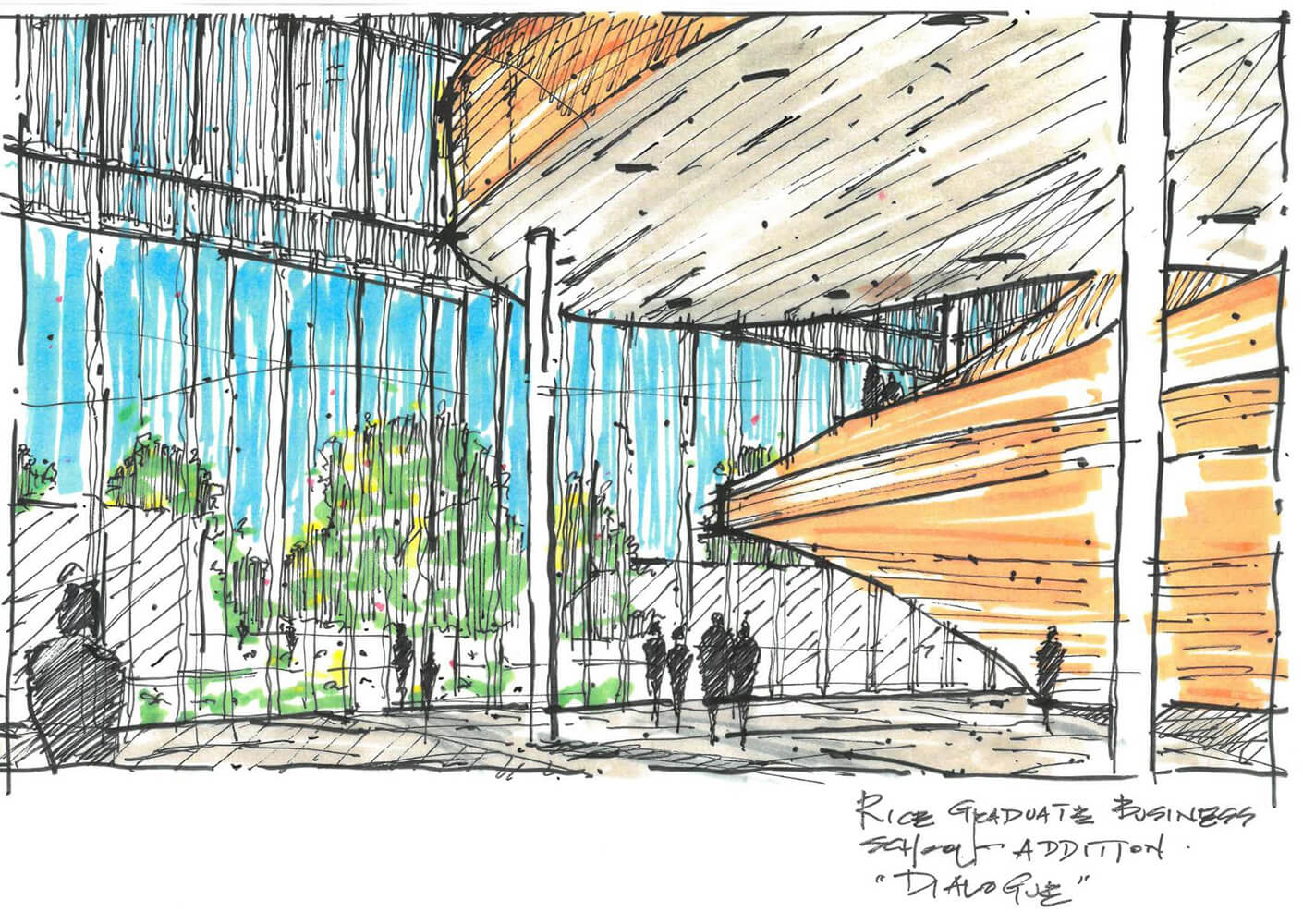
All sketches: Mide Akinsade.
Voices (from top): Diana Davis, Ron Stelmarski, Mide Akinsade, Eric Keune, Jean Mah, and Gabrielle Bullock.
Music: “Wandering Blues” by Mid Knight; “Zeroing” by Out to the World / Epidemic Sound


